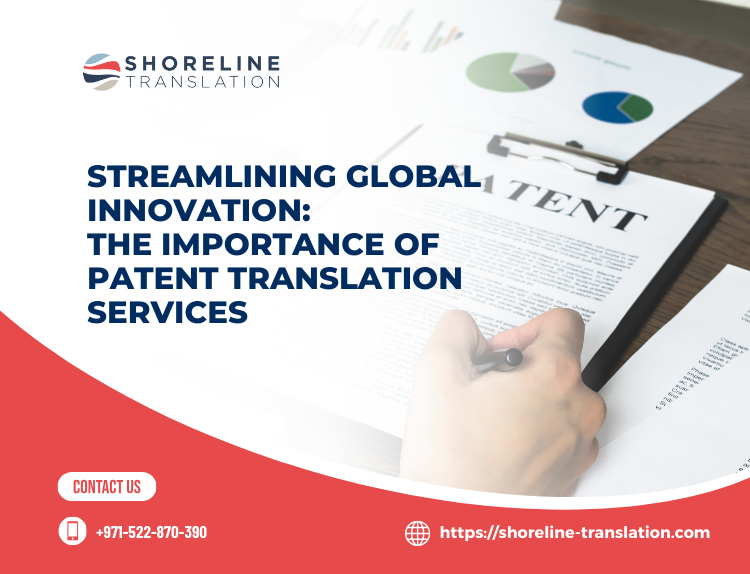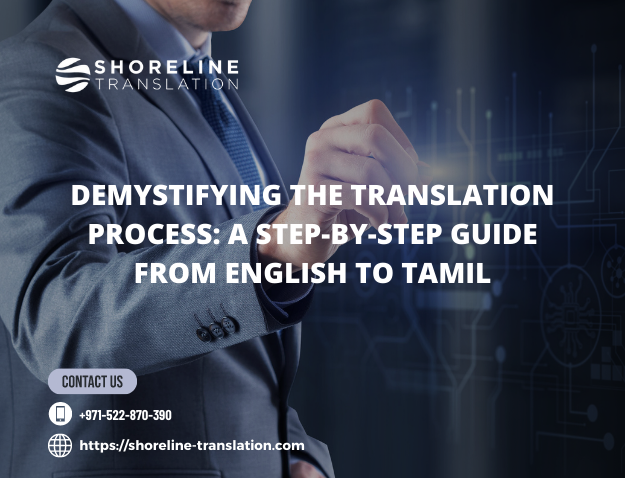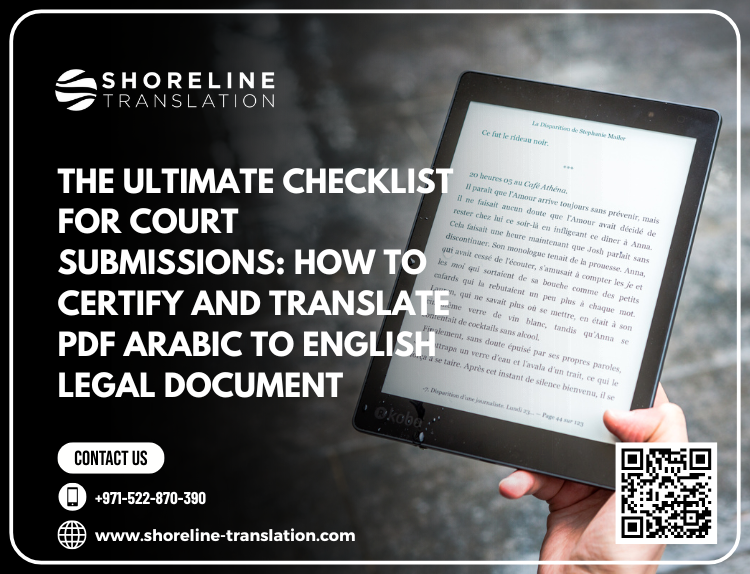Table of Contents
ToggleStreamlining Global Innovation: The Importance of Patent Translation Services
Welcome to our blog post on streamlining global innovation through the importance of patent translation services! In today’s interconnected world, businesses are constantly expanding their reach across borders, seeking to protect and monetize their intellectual property in international markets. However, navigating the complexities of patent laws and regulations can be a daunting task, especially when it comes to language barriers.
This is where patent translation services come into play. Patent translation involves accurately translating complex technical documents related to inventions and innovations from one language to another. It is not just a matter of linguistic proficiency but also requires expertise in understanding legal terminology and maintaining the integrity of the original document.
In this article, we will explore why patent translation services are necessary for global markets, discuss the challenges faced in this process, highlight the benefits of using professional patent translation services, provide tips for choosing the right service provider, examine the future of patent translation and its impact on global innovation. So let’s dive in and discover how these crucial services can revolutionize your business expansion strategies!

What is Patent Translation and Why is it Necessary?
Patent translation is the process of translating patent documents from one language to another. These documents contain detailed technical information about inventions and innovations, along with legal terminology that needs to be accurately translated for international use.
So, why is patent translation necessary? Well, when businesses want to protect their intellectual property in global markets, they need to file patents in different countries. However, each country has its language requirements for patent applications. This means that if the original document is not translated into the required language accurately and effectively, it may lead to rejection or loss of rights.
Moreover, accurate patent translation plays a crucial role in facilitating innovation on a global scale. Making technical knowledge accessible across different languages and cultures, allows inventors and researchers from various regions to collaborate more easily. This collaboration can spark new ideas and advancements that would otherwise remain confined within linguistic boundaries.
Additionally, patent translation helps businesses understand existing patents in foreign markets. By translating granted patents from other countries into their native language, companies can gain valuable insights into technological developments happening globally. This information can guide them in identifying potential opportunities for licensing or avoiding infringement issues when expanding their operations internationally.
In summary, patent translation is essential for protecting intellectual property, promoting innovation, and facilitating global collaboration in the field of technology and science.
Challenges Faced in Patent Translation for Global Markets
Patent translation plays a crucial role in enabling global innovation by allowing companies to protect their intellectual property rights across different countries. However, translating patents accurately and effectively can be quite challenging, especially when dealing with the complexities of global markets.
Language barriers pose a significant challenge in patent translation. Patents are highly technical documents that require precise terminology and vocabulary specific to each industry. Translators must have a deep understanding of both source and target languages while being knowledgeable about the subject matter.
Legal nuances further complicate patent translation. Each country has its unique legal system and requirements for patent filings. Translators need to ensure that they not only accurately translate the technical content but also adhere to the legal framework of the target market.
Additionally, cultural differences can also impact patent translation. Certain concepts or ideas may not have direct equivalents in other languages or cultures, leading to difficulties in conveying accurate meaning across borders.
Moreover, time constraints play a role in the challenges faced during patent translation. Companies often need fast turnaround times for translations due to impending deadlines or opportunities arising from new markets opening up. This puts pressure on translators to deliver high-quality translations within tight timelines.
Maintaining consistency is essential when translating patents globally. Consistency ensures uniformity across multiple jurisdictions and avoids any potential discrepancies that could undermine Intellectual Property protection efforts.
In conclusion, overcoming these challenges requires expertise and precision offered by professional patent translation service providers who understand the intricacies involved in translating patents for global markets.
Benefits of Using Professional Patent Translation Services
1. Accurate and Precise Translation: When it comes to patent translation, accuracy is paramount. Professional patent translation services ensure that your patents are translated with precision, capturing the technical and legal terminology accurately. This helps you maintain the integrity of your invention or idea across different languages and ensures that all relevant details are preserved.
2. Legal Compliance: Patents have legal implications, and any errors or inaccuracies in their translation can lead to serious consequences. By using professional patent translation services, you can rest assured that your patents will be translated by the specific legal requirements of each country where they are filed. This not only protects your intellectual property rights but also helps you navigate complex international patent laws.
3. Global Reach: In today’s globalized world, businesses must expand their reach beyond borders. Professional patent translation services enable you to effectively communicate your inventions or ideas to a broader audience by translating them into multiple languages. This opens up new markets and opportunities for innovation on a global scale.
4. Time and Cost Efficiency: Translating patents internally or relying on machine translations can be time-consuming and may result in errors that could prove costly later on. By outsourcing patent translation to professionals who specialize in this field, you save valuable time and resources while ensuring accurate translations from the start.
5. Enhanced Communication with Stakeholders: Patent translation services also facilitate effective communication with stakeholders such as investors, partners, and clients who may speak different languages. This helps you build stronger relationships and foster trust by ensuring that everyone is on the same page when it comes to your patented inventions or ideas.
6. Technical Expertise: Patent translation requires not only linguistic expertise but also technical knowledge in various fields such as engineering, medicine, or science. Professional patent translators have the necessary background and experience to understand the complex technical terminology used in patents and accurately translate them.
7. Confidentiality: When dealing with valuable intellectual property, confidentiality is critical. Professional patent translation services adhere to strict security protocols to protect your sensitive information from unauthorized access or disclosure.
In conclusion, using professional patent translation services offers numerous benefits for businesses seeking to protect their intellectual property rights and expand their reach globally. By entrusting your patent translations to experts, you can ensure accuracy, legal compliance, cost-effectiveness, and confidentiality while effectively communicating your inventions or ideas with a broader audience.
Tips for Choosing the Right Patent Translation Service Provider
Tips for Choosing the Right Patent Translation Service Provider:
1. Expertise in Patent Law and Technical Knowledge: When selecting a patent translation service provider, ensure they have a team of translators who are familiar with both patent law and technical terminology. This expertise is crucial to accurately translate complex patent documents without compromising their legal or technical integrity.
2. Quality Assurance Measures: Look for a company that implements rigorous quality assurance measures throughout the translation process. This includes multiple rounds of proofreading and editing by experienced linguists, ensuring accuracy, consistency, and adherence to industry standards.
3. Confidentiality and Data Security: Patent documents contain sensitive information that must be handled with utmost confidentiality. Choose a translation service provider that guarantees strict data security measures such as secure file transfer protocols (FTP) or encryption methods to protect your intellectual property.
4. Industry Experience and Track Record: Consider the track record and reputation of the translation service provider within your specific industry or field of technology. An experienced provider will understand the unique requirements, terminology, and nuances associated with different industries.
5. Timely Delivery and Project Management Capabilities: Timeliness is critical in patent translations, especially when there are tight deadlines involved in global innovation processes. Look for a service provider that has efficient project management capabilities to ensure prompt delivery while maintaining high-quality standards.
By considering these tips when choosing a patent translation service provider, you can ensure accurate translations that meet legal requirements while supporting your global innovation efforts seamlessly.
Future of Patent Translation and its Impact on Global Innovation
The future of patent translation is poised to have a significant impact on global innovation. As technology continues to advance at an unprecedented pace, the need for effective communication and collaboration across borders becomes increasingly crucial. With patents being one of the primary means for protecting intellectual property, accurate and efficient translation services play a vital role in facilitating international innovation.
As more businesses seek to expand their operations globally, the demand for patent translations will undoubtedly rise. Companies looking to protect their inventions and ideas in foreign markets will rely heavily on professional translation services to ensure that their patents are accurately translated into different languages.
With the growing emphasis on globalization and digital connectivity, innovations can now spread rapidly across countries and continents. Patent translations enable inventors from diverse backgrounds to understand each other’s work and build upon existing technologies. This fosters cross-pollination of ideas and accelerates global innovation by enabling collaborations that transcend language barriers.
Advancements in artificial intelligence (AI) are likely to revolutionize patent translation processes. AI-powered tools can enhance the accuracy and speed of translations while reducing costs significantly. Machine learning algorithms can analyze vast amounts of data from previous translations, improving subsequent outputs over time.
Moreover, as emerging markets become key players in technological advancement, there will be a greater need for patent translations into languages that were previously less prominent globally. This opens up new opportunities for businesses seeking growth beyond traditional markets.
Streamlined patent translation processes contribute directly to increased efficiency in global research and development efforts. Eliminating language barriers through effective communication channels provided by professional translators specialized in patents ensures seamless collaboration between researchers worldwide.
In conclusion, The future of patent translation holds immense potential not only for individual inventors but also for companies striving towards global expansion and innovation breakthroughs across borders.
Shoreline Offers Patent Translation Services
Shoreline Translation is a leading provider of patent translation services, offering comprehensive solutions to help businesses streamline their global innovation efforts. With years of experience in the industry, Shoreline understands the importance of accurate and efficient patent translations for companies operating on an international scale.
In today’s global marketplace, businesses must protect their intellectual property across borders. This includes obtaining patents in different countries and ensuring that all relevant documentation is accurately translated into the local language. Patent translation involves translating complex technical and legal terms while maintaining their accuracy and specificity.
One of the challenges faced in patent translation is the specialized nature of the content. Patents often contain highly technical terminology that requires expertise and knowledge in both language and subject matter. Shoreline has a team of experienced translators who are not only fluent in multiple languages but also have backgrounds in various fields such as engineering, biotechnology, software development, and more.
By partnering with Shoreline for your patent translation needs, you can expect several benefits. You will receive high-quality translations that meet rigorous standards set by international patent offices. You will save time as Shoreline employs efficient workflows to ensure timely delivery without compromising accuracy or quality.
Choosing the right patent translation service provider can be overwhelming considering the many options available. When selecting a partner like Shoreline, it’s essential to consider factors such as their expertise in your specific industry, their track record of delivering accurate translations within deadlines, and client testimonials or references attesting to their professionalism and reliability.
As technology continues to advance at an unprecedented pace globally, so does innovation across industries. The future of patent translation will undoubtedly involve advancements such as machine learning algorithms that can assist human translators with faster turnaround times while still ensuring precision.
Choosing Shoreline as your trusted partner for patent translation services ensures seamless communication between inventors, attorneys, businesses, researchers, and investors around the world. They understand how important it is to maintain confidentiality throughout every step of the translation process, and they prioritize accuracy to protect your intellectual property rights on
FAQs
1. What is patent translation?
Patent translation refers to the process of translating legal documents related to patents from one language into another. It involves converting complex technical and legal terms accurately, ensuring that the translated document maintains its original meaning and intent.
2. Why is patent translation necessary?
In today’s global market, protecting intellectual property rights through patents is crucial for businesses. Patent translation allows companies to file their patents in multiple countries, expanding their reach and potential customer base. It also helps facilitate collaboration between international inventors and promotes innovation on a global scale.
3. Can I use machine translation for patent documents?
While machine translation has improved over the years, it does not guarantee accurate translations for highly specialized fields like patent law. Translating patent documents requires expertise in both the technical subject matter and legal terminology involved, making professional human translators essential for precise results.
4. How long does it take to translate a patent document?
The time required for translating a patent document depends on various factors such as the length of the document, complexity of technical terms, availability of reference materials, and urgency of the project. Professional translators can provide estimated timelines based on these factors.
5. Are there any specific requirements for translated patents in different countries?
Yes, each country has its specific requirements regarding format, content, word count limits, and filing procedures for translated patents. Working with an experienced patent translation service provider ensures compliance with these requirements while delivering high-quality translations tailored to individual jurisdictions.
Conclusion
In today’s global marketplace, where innovation knows no boundaries, patent translation services play a vital role in streamlining the process of protecting intellectual property across different countries and languages. From ensuring accuracy and legal compliance to overcoming cultural and linguistic barriers, professional patent translation services provide a comprehensive solution for businesses looking to expand their reach.
By understanding the importance of patent translation and the challenges faced in this field, companies can make informed decisions when selecting the right service provider. With benefits ranging from improved communication to enhanced market access, it is clear that partnering with a reputable patent translation agency can significantly impact global innovation.
As technology continues to advance at an unprecedented pace, the future of patent translation holds great potential. Machine learning algorithms may lead to more efficient translations while still maintaining accuracy. The use of AI-powered tools may further streamline the process by automating certain aspects. However, it is important to remember that human expertise will always remain essential in ensuring quality translations that meet legal standards.
At Shoreline Patent Translation Services, we understand the complexities involved in translating patents for international markets. With our team of experienced linguists and subject matter experts, we guarantee accurate and reliable translations tailored specifically to your needs. Our commitment to excellence has made us a trusted partner for countless organizations seeking seamless globalization.





